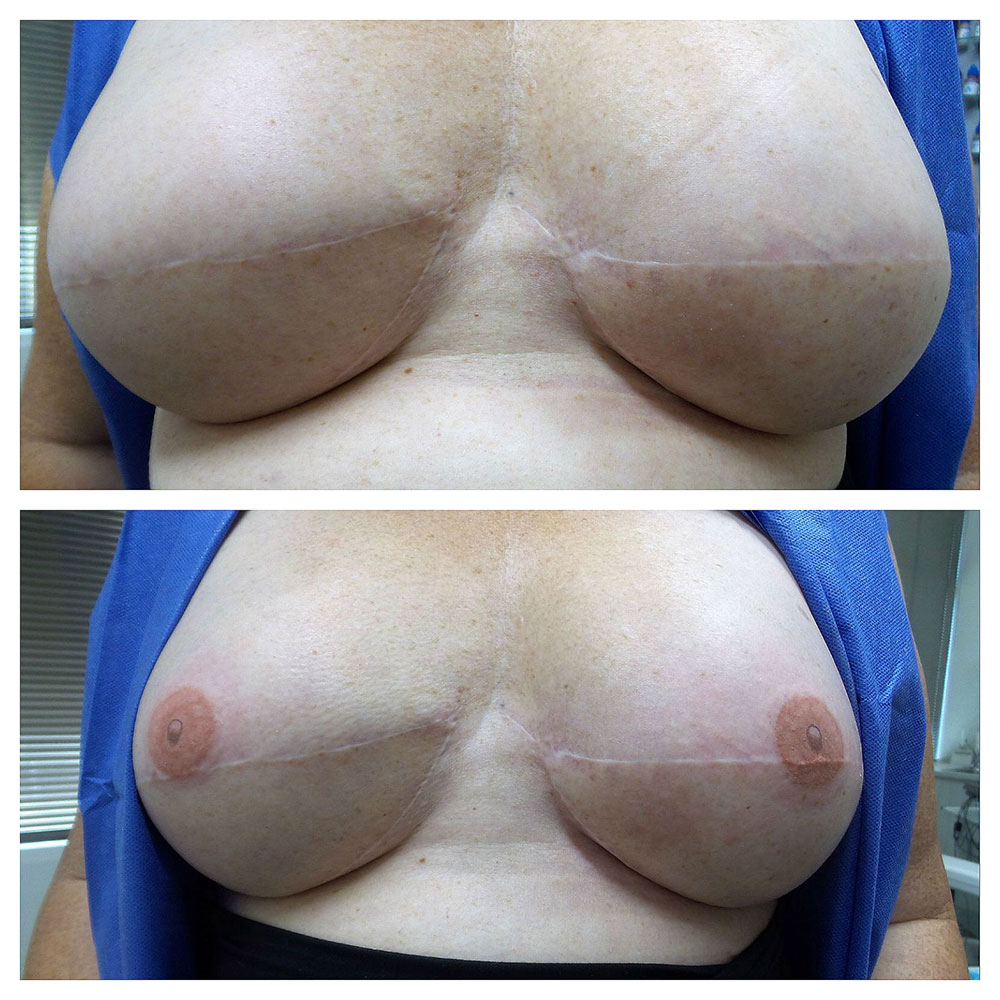
For many women the journey from mastectomy to breast reconstruction is not complete until they have had nipple reconstructions performed. Not all women go down this path and many are happy to simply have something to replace their lost breasts in order to feel feminine. However, some women feel that they are not complete without nipple reconstructions since the breasts even after a very good reconstruction will not look natural without nipples and areolas on the breast mounds.
For surgeons who perform breast reconstruction, nipple and areola reconstruction improves the aesthetic result and provides a sense of completion. Nevertheless, this should not be the reason to proceed with nipple reconstruction.
Nipple Areolar Reconstruction Procedure

2nd stage (6 months later) – removal of tissue expanders and replacement with implants.
3rd stage – 3D nipple tattooing one year later (performed by Chris Comans at Meditatt)
Nipple reconstruction is usually a simple procedure that can be performed under a local anaesthetic in most cases. There are a variety of techniques described but most involve rearranging the skin and subcutaneous tissue on the breast mound in the position that the nipple needs to be. For a unilateral breast reconstruction the nipple position is either marked to match the other side or placed in a position where one expects to lift the nipple, if a breast lift or reduction is planned for the non-cancer side. The procedure is usually performed as day surgery. There is minimal downtime in most patients can return to work the same day if that had it performed under local anaesthetic, or the next day if they have had sedation.
Scars from a Nipple Areolar Reconstruction Procedure
Scars from nipple reconstruction are usually inconspicuous and may be hidden within the reconstructed or tattooed areola. If the areola is to be tattooed, this can usually be commenced within two to 3 months of nipple reconstruction.
The risks of nipple reconstruction are low and uncommon. They include low-grade superficial infections, skin necrosis which is usually mild and occasional healing problems. In rare cases, especially if an implant reconstruction has been performed without the use of a soft tissue flap, exposure of the implant may occur which could jeopardise the reconstruction.
Occasionally, the reconstructed nipple shrinks significantly due to the nature of the body’s reaction to redundant tissue. For this reason most surgeons will exaggerate the size and projection of the reconstructed nipple to allow for shrinkage over the first 3 to 6 months. In some patients, shrinkage of the nipple is not sufficient and a secondary procedure to reduce its projection may be required. In others, shrinkage results in inadequate projection and a secondary procedure to improve projection in the reconstructed nipple may be desired.
Medicare Rebates for Nipple Reconstruction
In Australia, Medicare rebates may apply for both the nipple reconstruction and for the areolar tattooing, though some restrictions may apply as to who may access these numbers. Some patients may not be candidates for nipple reconstruction for a variety of reasons. Others may choose not to have another surgical procedure. In those who still want some form of improvement a three-dimensional tattoo may produce very nice results.
